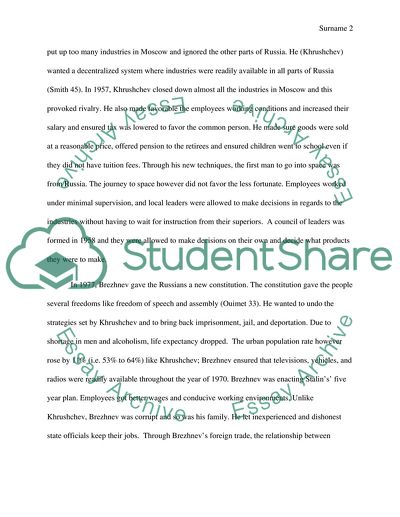Cite this document
(The Policies of Khrushchev, Brezhnev, and Gorbachev Term Paper, n.d.)
The Policies of Khrushchev, Brezhnev, and Gorbachev Term Paper. Retrieved from https://studentshare.org/politics/1617181-compare-the-policies-of-krushchev-brezhnev-and-gorbachev-in-regard-to-managing-relationships-with-ruling-communist-parties-on-the-eurasian-continent
The Policies of Khrushchev, Brezhnev, and Gorbachev Term Paper. Retrieved from https://studentshare.org/politics/1617181-compare-the-policies-of-krushchev-brezhnev-and-gorbachev-in-regard-to-managing-relationships-with-ruling-communist-parties-on-the-eurasian-continent
(The Policies of Khrushchev, Brezhnev, and Gorbachev Term Paper)
The Policies of Khrushchev, Brezhnev, and Gorbachev Term Paper. https://studentshare.org/politics/1617181-compare-the-policies-of-krushchev-brezhnev-and-gorbachev-in-regard-to-managing-relationships-with-ruling-communist-parties-on-the-eurasian-continent.
The Policies of Khrushchev, Brezhnev, and Gorbachev Term Paper. https://studentshare.org/politics/1617181-compare-the-policies-of-krushchev-brezhnev-and-gorbachev-in-regard-to-managing-relationships-with-ruling-communist-parties-on-the-eurasian-continent.
“The Policies of Khrushchev, Brezhnev, and Gorbachev Term Paper”, n.d. https://studentshare.org/politics/1617181-compare-the-policies-of-krushchev-brezhnev-and-gorbachev-in-regard-to-managing-relationships-with-ruling-communist-parties-on-the-eurasian-continent.


